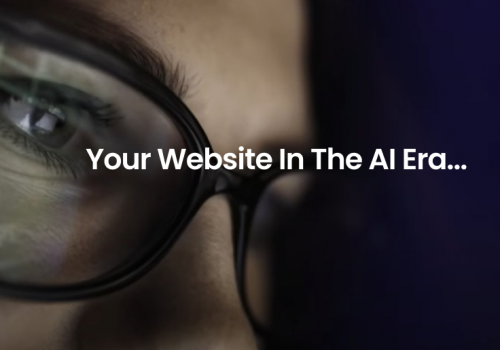Customer Appreciation. When you show customers that you appreciate them, they will positively talk about your business. They will refer your business to their friends and family and write reviews online. Some of these customers will become your brand promoters, essentially doing free marketing work for your business! Sounds great, right? It is, but the key is getting it right. That’s what we’re going to be focusing on today. Let’s get started!
1. Be Personal
Personalization is the hot word in the business world right now. With data science well and truly here, we can now know our customers in a way we never could in the past. We are no longer shooting in the dark and hoping to get a sale. We’re no longer casting a wide net in the hopes that a few customers will be caught in it.
Today, we can aggressively target a niche set of customers to deliver them exactly what they want. We can take their personal wants and needs and deliver a personalized experience that will make them a loyal customer for life.
When it comes to customer appreciation, being personal is key to success. If you plan on giving your loyal customers a free gift every once in a while, then this can be a very effective way of showing your appreciation. It only costs your company a small amount of money but will have a significant positive impact on your topline. To get an even greater positive effect, you should make this free gift personal. Do you know that this particular customer only orders one of your product lines? Then send them something from that product line or a voucher for that product line. Sure, everyone likes free gifts, but they like personalized gifts even more. It shows that you’re paying attention to your customers and understand them on a deeper level. This makes customers feel valued and appreciated to a greater extent than if they just received a random free gift.
2. Unexpected Gifts
Unexpected gifts are the most meaningful way of showing appreciation to your customers. Sometimes our favorite gifts are the gifts we had no idea we were going to receive. This works outside of business too. On our birthday, or Christmas or other holidays, we expect to receive gifts. Some of these gifts may wow us, but others are more like a token of effort.
We are expected to get gifts for certain family members or loved ones, so we do it even if we haven’t got something specific in mind that we think they will like. But have you ever walked past a shop and thought “I’m going to get that for my brother, he’d really like that”. These types of gifts are extremely effective for the receiver because they feel cared for and like you were thinking about them as you go about your day.
Many businesses understand the importance of gifts but will instead focus on expect gifts like loyalty programs. Loyalty programs and customer reward schemes are a great way of incentivizing your customers to keep coming back to your company. They reward customers for sticking with you rather than trying your competitors. However, the gifts in these programs are expected by the customer. They don’t create the same sense of appreciation as an unexpected gift does. A customer is much more likely to tell their friends and family how great your company is if they get a totally unexpected gift that they really liked, rather than if they simply moved up a tier in your rewards program.
3. Gifts Should be Small and Occasional
This ties into both personalization and unexpected gifts. If you give your loyal customer a free gift every time, they make a purchase, this will no longer be considered a gift. Instead, they will think this is an expected part of doing business with your company. After a while, the appreciation of this will wear off. The wow factor is gone. This is why it’s better to give gifts occasionally so that your customers don’t expect them and are always excited when they do get a gift.
Similarly, gifts should always be small and inexpensive. This is for several reasons. Firstly, you could find yourself getting into some hot water with regard to bribery or similar laws in certain countries. You don’t want to appear to be bribing or buying your customer’s loyalty. You want customers to buy from your company because of your excellent products or the excellent customer experience they receive. They shouldn’t be buying from your company solely to get these gifts.
Leading on from this, if your gifts are so flashy and expensive that customers want to buy from you just to get these gifts, then you risk disappointing them in the future. If you don’t intend to give these gifts all the time or plan to only trial it, then customers who only joined to receive these gifts might become disappointed and take to social media to complain. Now, of course, anyone complaining about not getting free expensive gifts is likely to come across as entitled and not worth listening to, but nonetheless, bad reviews are bad reviews. Some customers just glance at the overall score for your company and move on if it isn’t their preferred number. They might not even read the reviews.

4. Don’t Expect Anything in Return
This one is related to how to show customer appreciation in the right way. Whether it’s in business or your personal life, gifts are meant to be given freely and without expectation of getting something in return. As soon as you expect something in return for a gift, then it’s no longer a gift. Instead, it’s a transaction. You are saying “I will give you X, if you give me Y”. The other person now has to live up to their end of the deal too, and if they don’t, you can expect there to be tensions on both sides.
This type of transactional type behavior has been around for so long and caused problems so consistently. It’s a wonder that people haven’t figured out that this behavior leads to nothing good for either party. The person (or entity) doing the giving feels let down if the other party doesn’t fulfill their end of the deal. They feel undervalued and underappreciated, or like they have been taken advantage of. The person who receives a gift but is expected to give something in return feels that the gift is tainted. They will be reluctant to accept gifts in the future because they know it comes at a cost, and one they probably didn’t want to sign up for.
To avoid getting into this territory with customers, you should just offer the gift without any further communication about how they can repay you. For example, don’t say something like “Hey, here’s a free pen. To thank us, you can write a review here”. Just give the pen and move on.
5. Send Thank You Notes
Customer appreciation comes in many forms, and sometimes something easy and simple is the best. Thank you notes have been around for a long time and have stood the test of time. Why? Because they work! People like to be randomly thanked for their loyalty or patronage. We also tend to keep thank you notes, especially personalized ones, for long after we received them. This is because we like to look back on the times in our lives that we were appreciated or noticed. A thank you note from a company might not change a person’s life or end up in their box of keepsakes along with their love letters and lockets, but it still creates a lasting impression.
Over the years, many companies have tried to modernize the thank you note by sending an email or a text message. These methods can be effective, but no digital approach is as effective as a traditional thank-you note. And you get extra points for sending hand-written thank you notes!
6. Charitable Contributions
Charitable contributions can be a great way of showing your customers that you appreciate their values and their outlook on life. For example, if your company has a strong focus on being environmentally friendly or sustainable, and your research suggests that’s why your customers love you, then they will likely appreciate you making a charitable contribution. You can give to charities or initiatives that align with your customer’s views or charities that your customers also donate to. This will bring you closer to your customers.
If you’re going to go down this route, then it’s essential that you do your research. Don’t just pick a charity that sounds good on paper. Extensively research this charity’s history and the action they have taken in the past. Does the money they receive lead to meaningful improvements? Are they active in pushing for a better world? Will they want to work with your company in the future? These are all questions you should be asking when picking a charity. Picking the wrong charity could backfire and harm your reputation.

7. Customer Appreciation Events
Customer appreciation events can be a great way of bringing your customers together and creating memorable experiences. Customer experience is all about creating memorable experiences, and customer appreciation events are full of them. Your customers will always remember that they went to that hotel or that city because your company invited them there.
However, customer appreciation events can be expensive and impractical, especially if you have a very international customer base. Similarly, they aren’t practical during the current coronavirus pandemic where travel is restricted, and social distancing must be maintained. The good news is, you don’t have to hold your event in a physical location if you don’t want to. If you want a more practical and cheaper version, you can hold a Facebook live event instead. The key is to make your event fun and memorable. Show off your fun and silly side!
8. Promote Your Customers
If you have a loyal customer who is constantly engaging with you on social media, then don’t be afraid to show your support by engaging with them, even in their personal or professional goals. Many companies try to keep the conversation always focused on business. This makes sense in many ways – It keeps everything clean, simple, and on track. However, it can be boring, especially for people browsing your social media.
If you’re wondering how to do this correctly, then here are some examples:
- One of your customers is a budding artist and shares a painting on their social media. As long as the painting is inoffensive (not controversial, like for example, a landscape), then you can share it and say, “Wow we have such talented customers!”.
- One of your customers tweets about going for their first run in months. Congratulate them and encourage them to continue. This shows that you care about their experiences and that your company is made up of real people who have similar goals.
- If you see one of your customers asking for advice, you can send them one of your blog posts if it answers their question. The key here is to be relevant. Don’t just link articles that are not directly relevant to the subject or don’t answer the question. You should always write a message along with your link too, and preferably one that encourages further engagement. For example, you can say “Hey Sam, we answered this question in our recent blog. Why don’t you check it out and let us know what you think? We’d be happy to answer more questions if anything is missing.”




















